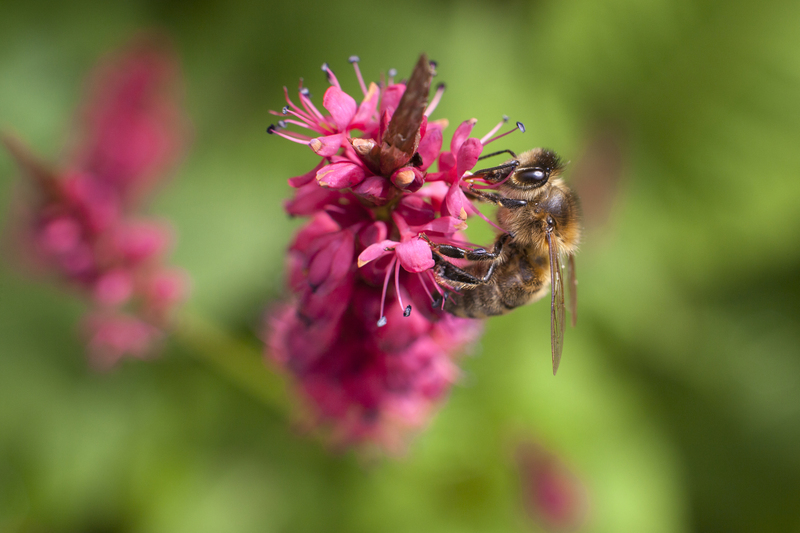Cultivate Stunning Orchids with Confidence
Posted on 21/05/2025
Cultivate Stunning Orchids with Confidence: The Ultimate Guide for Orchid Lovers
Are you enchanted by the elegant beauty of orchids? Growing orchids at home can seem daunting, but with the right tips and practical knowledge, anyone can cultivate breathtaking orchids with confidence. Whether you're a novice or an experienced plant enthusiast, this comprehensive guide will empower you to nurture vibrant, thriving orchid plants in any environment.

Why Choose Orchids? An Introduction to These Exquisite Plants
Orchids are among the most captivating and diverse flowers on Earth, boasting over 25,000 species and countless hybrids. Their delicate blooms, exotic forms, and alluring fragrance make them a favorite for both indoor and outdoor gardens. But what truly sets orchids apart is their adaptability and surprising resilience when given the right care.
- Variety: From the classic Phalaenopsis (Moth Orchid) to the showy Cattleya and striking Dendrobiums, there's an orchid for every taste and growing condition.
- Longevity: With proper attention, many orchid species bloom repeatedly for years, bringing color and elegance to your home or office.
- Air Purifying: Like many houseplants, orchids are excellent natural air filters, enhancing your living space's quality.
Understanding the Basics of Orchid Care
1. Choosing the Right Orchid Species
Selecting the optimal orchid variety is the first step to successful cultivation. Some common beginner-friendly orchids include:
- Phalaenopsis orchids: Known for their beautiful arching stems and long-lasting blooms, these orchids adapt well to typical home conditions.
- Dendrobium orchids: These come in many colors and sizes and generally prefer brighter light.
- Cattleya orchids: Valued for their fragrant and flamboyant flowers, these require moist air and good airflow.
- Oncidium orchids: "Dancing Lady" orchids thrive in bright, indirect light and produce sprays of intricate flowers.
Research your chosen species to ensure you meet its specific light, temperature, and humidity requirements. This targeted approach will help you grow orchids confidently and avoid common mistakes.
2. The Perfect Orchid Growing Environment
Creating the ideal environment is essential for cultivating healthy, stunning orchids. Focus on these key factors:
- Light: Most orchids need bright, indirect sunlight. Place them near east or south-facing windows. If natural light is limited, consider using grow lights.
- Temperature: Orchids generally thrive at daytime temperatures of 65–75°F (18–24°C) and nighttime drops to 55–65°F (13–18°C).
- Humidity: These tropical beauties love humidity levels of 40-60%. Use a humidity tray or room humidifier if your air is dry.
- Air Circulation: Ensure gentle airflow around your plants to prevent mold and encourage robust growth.
Tip: Grouping orchids together helps maintain humidity, and misting can provide their leaves with additional moisture.
3. Potting Medium - The Foundation of Orchid Health
Unlike traditional houseplants, orchids need a special growing medium that supports their unique root systems. Never use regular garden soil. Instead, opt for specialized mixes such as:
- Bark-based mixes: Excellent drainage and aeration, ideal for most epiphytic orchids (like Phalaenopsis and Cattleya).
- Sphagnum moss: Retains moisture, suitable for smaller or newly potted orchids.
- Coconut husk chips or perlite: Provide added drainage and structure.
Repot your orchid every 1-2 years to refresh the medium and keep roots healthy.
Watering and Feeding Orchids
1. Understanding Orchid Watering Needs
To grow spectacular orchids confidently, you must master the art of watering:
- Water only when needed: Let the potting medium dry out slightly between waterings. Stick your finger into the mix - if it feels damp, wait another day or two.
- Water thoroughly: Allow water to drain out completely; never let your orchid sit in standing water.
- Avoid overwatering: This is the most common mistake and leads to root rot.
Tip: Water in the morning, using room-temperature, distilled, or rainwater if possible. This allows leaves to dry before nighttime, reducing the risk of fungal disease.
2. Fertilization for Lush Growth and Blooms
For vibrant, long-lasting orchid flowers, consistent feeding is essential:
- Use a balanced orchid fertilizer: Look for a "20-20-20" formula or one designed specifically for orchids. Dilute it to half the recommended strength.
- Feed regularly: Apply fertilizer every 2-4 weeks during active growth (spring and summer). Decrease feeding in fall and winter.
- Flush with clean water: Once a month, water your orchid thoroughly to rinse away any fertilizer salts that may have built up.
Pruning, Repotting, and General Maintenance
1. Pruning Spent Blooms
To encourage repeat flowering and lush foliage, prune your orchid after blooms fade:
- Phalaenopsis orchids: Cut the flower spike just above the node (joint) below the first spent flower. With luck, a new spike will emerge from this point.
- Other orchids: Remove the entire flowering stem at the base once all blooms have dropped.
Always use sterilized scissors to prevent the spread of disease.
2. When and How to Repot Your Orchid
Repot orchids every 12-24 months, or whenever their roots outgrow the pot or the growing medium breaks down. Here's how:
- Gently remove the orchid from its old pot and shake off the old medium.
- Trim away any dead or mushy roots with sterilized scissors.
- Place the orchid in a clean, slightly larger pot, and add fresh orchid mix around the roots.
- Water sparingly for the first week to allow any wounds to heal.
Orchid Troubleshooting: Common Issues and Solutions
Yellow Leaves
Yellow leaves are often a sign of overwatering or inadequate light. Adjust your watering schedule or move the plant to a brighter, indirect location. Trim off any yellowed leaves to encourage healthy new growth.
Root Rot
If your orchid's roots turn black and mushy, it's likely suffering from root rot caused by excess moisture. Remove the plant from its pot, trim off affected roots, and repot in fresh, dry medium.
Pests
- Mealybugs, spider mites, and scale insects can plague orchids. Wipe leaves with a damp cloth or treat with organic insecticidal soap.
Failure to Bloom
If your orchid isn't flowering, adjust its light exposure, feeding routine, and ensure it's experiencing a nightly temperature drop. Some orchids require a period of cooler nights to trigger blooming.
Best Practices to Grow Spectacular Orchid Plants
- Keep a consistent care routine: Orchids thrive with stability in watering, feeding, and placement.
- Monitor environmental changes: Sudden shifts in temperature or humidity can stress your plants.
- Be patient: Some species take time to rebloom or adjust after repotting. Don't give up!
- Observe your orchids: Pay close attention to leaves, roots, and stems--nature often signals when something's amiss.
Advanced Orchid Growing Tips for Enthusiasts
Ready to take your orchid cultivation confidence to the next level? Here are expert-recommended strategies:
- Experiment with humidity microclimates: Use pebble trays or terrariums for delicate species requiring higher moisture.
- Supplement with artificial light: LED grow lights can make all the difference for winter blooms or in rooms without ample sunlight.
- Try water culture: Some growers successfully keep orchids in a semi-water culture, changing water weekly for fast root growth.
- Hybridize your own orchids: Advanced hobbyists can cross-pollinate different orchids and grow the resultant seeds for unique blooms.

Frequently Asked Questions: Confident Orchid Care
1. How often should I water my orchid?
Depending on the environment and species, water every 7-10 days, or when the potting mix is mostly dry but not bone dry.
2. My orchid's leaves are wrinkled and limp. What should I do?
This is typically a sign of underwatering or root issues. Check the roots and water more regularly, ensuring proper drainage.
3. How do I fertilize orchids safely?
Use a balanced orchid food at half strength, feeding more in spring and summer and less in the autumn and winter months.
Conclusion: You Can Grow Spectacular Orchids with Confidence
Embark on your orchid-growing journey today! With patience, attention, and the right techniques, anyone can cultivate stunning orchids that bring beauty, relaxation, and a sense of accomplishment. Remember, successful orchid care is a rewarding process--each blossom is your proof of dedication and skill.
Ready to cultivate vibrant orchid flowers with confidence? Start by choosing the right species, setting up an optimal environment, and practicing attentive care. Share your own successes and challenges with online orchid communities, and watch your collection flourish year after year. Happy growing!

